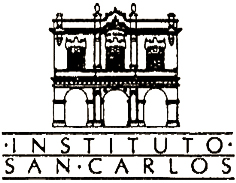History of the Instituto San Carlos / San Carlos Institute

In 1871, educator Juan María Reyes and Cuban community leader José Dolores Poyo, and several other Cuban exiles who had come to Key West, Florida, to organize the campaign for Cuba’s independence from Spain, proposed to establish an educational and cultural institute to help preserve the language, cultural values and democratic ideals of the Cuban people. The San Carlos Institute, named after Cuba’s San Carlos Seminary and in honor of Carlos Manuel de Céspedes, father of Cuba’s independence, opened its doors in Key West, Florida, in 1871.

The original San Carlos Institute, considered a “patriotic shrine” by the Cuban people, was a small wooden structure. In 1884, the San Carlos had moved to a larger facility on Fleming Street but burned to the ground in the great fire of 1886 that destroyed much of Key West. Under the leadership of Cuban civic leader, Martin Herrera, the Cuban community rebuilt the San Carlos, at its current site on Duval Street, in the heart of Key West. It was here that Cuba’s legendary poet and patriot, José Martí, assembled the Cuban exile people and fondly called the San Carlos “La Casa Cuba” or the home of the Cuban people.
The San Carlos operated as one of America’s first bilingual and racially integrated schools. For more than a century, children of all races attended school at the San Carlos Institute where classes were taught in English and Spanish. In the mid-1970s, the school was forced to close due to the building’s deteriorating condition. Valuable books, paintings, and other historical material were lost and damaged during this period. In 1981, the building’s façade collapsed, injuring a tourist. It was then that the Cuba’s patriotic shrine was imperiled when some threatened to level the building. Others called for transforming the facility from a school to a night club.

In 1985, Cuban residents of Key West and Miami brought the imminent threat facing the San Carlos Institute to the attention of Florida’s Hispanic Affairs Commission, then chaired by Dr. Rafael Peñalver, a prominent Miami attorney. Saving the San Carlos became Peñalver’’s personal crusade. He led a successful statewide effort that quickly became a “labor of love” by all who were involved in its restoration and preservation. With the support of the State of Florida and the community at large, the San Carlos Institute was soon restored to its former glory. More importantly, the San Carlos Institute’s historic mission, decreed more than a century ago by Cuban exiles fighting for Cuba’s independence, was proclaimed and reaffirmed.
On Jan. 3, 1992, the San Carlos Institute reopened its doors as a multi-purpose facility that serves as a museum, theater, library, school, conference theater and art gallery.
The “Pichs Collection—Cuban Philately Project,” now being carried out in conjunction with the National Postal Museum (Smithsonian Institution) presents virtual exhibitions using Cuban postage stamps (and related postal materials) from the San Carlos Institute’s Roberto Pichs collection. The essays and exhibitions prepared for this project present new perspectives on, and provide new data for, Cuban history and visual anthropology as well as philatelic studies.
As a result, millions of people are now able to access, appreciate, and study a small sampling of the San Carlos Institute’s invaluable collection of Cuban historical material, via the World Wide Web. The San Carlos Institute continues to expand its presence through exhibitions and programming to further the understanding of Cuban history, culture and values.
